KMMCS in heavy protected and in civil version in agricultural use
1. Recultivation, Replantation
Forest recultivation -also called reforestation- might be necessary after damages by storms or after break of trees from heavy snow load.
Also after forest fire the damaged area normally is recultivated, which makes it necessary to prepare the ground. KMMCS works at large areas and shredders
all material from fallen trees, remaining stumps and bushes into small pieces. The
mill turns counter drive direction and by that takes soil and overlay shelf,
incl. the stalks. The teeth move this material towards the upperside steel wall,
break all and mill the shelf, if desired with the earlier placed lime into
the soil. Important is, that the underlaying layer is not used as abutment,
so the base surface is not compacted. In addition the machine works with almost
no vibration and in spite of the huge weight has only a little ground pressure,
-comparable to a human standing at one food- so also no compression from this.
It mills all this organic material into the full volume of soil, down to a depth of max. one meter. In this up to 100 cm
thick layer the substrate becomes distributed equally. This is same procedure for soil-preparation as afforestation at beginning of forest plantation.
The soil is loosen in desired density.
By that the Krohn machines loosens the ground in a definite manner and can compact it to the desired grade of densification. Done so, the recultivation
or reforestation can start immediatelly, as ground is ideal prepared for healthy grown up of plants by better fertilization with more equally mixed nutrients and by the scarified soil.
The produced layer of mixed soil of an usual milling is 35 to 40 cm and with
so little compactness that it might be regarded to drive over it a second time
to reach a density of 1 kg/dm³.
The machine first was build soleily for mechanical planting in difficult
soil with a lot of overlay shelf. It turned out that the machines also were
useful in combined operation of work-in lime simultaneously with the deep loosing
of soil and its deep liming.
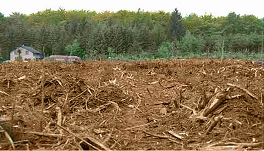
|
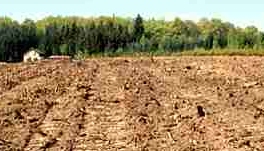
|
|
Much old wood is milled into the soil.
|
This is the same methode like for renewal of plantations as e.g. for cotton with one year. At bananas plantage, where the once in lifetime flowering types have
a lifetme of two years, but also the types with lifetime of several years with repetitive fruit grow will be cut after certain time. They can be cut, chopped
and milled incl. trunks, roots and branches into full volume of soil by Krohn machines.
At Short Rotation Forestry (SRF) and Short Rotation Coppice (SRC) KMMCS makes
the work of cutting all roots, chipping and mixing all remained biomass of stump
and roots equally into the soil after the harvest of trees or coppice as energy
crop.
SRF is the practice of cultivating fast-growing trees that reach their economically
optimum size between eight and 20 years old. Species used are selected on this
basis and include Alder, Ash, Southern Beech, Birch, Eucalyptus, Poplar, Willow,
new varieties of paulownia elongata, Paper mulberry, Australian Blackwood and
Sycamore.
Other plants´ profit decrease after few years and they were burned down usually. Nutrients and biomass would be lost then.
Instead of such procedure Krohn machines cut the trees with its max. 30 cm diameter and bushes or shrubs into small pieces and mills all into soil in just one path.
All contained microorganisms, nutrition and biomass is saved for next generation, which leds to higher fertility and increased profit.
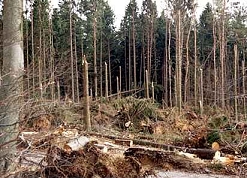 |
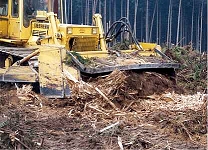 |
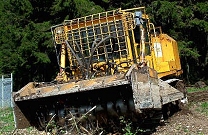 |
Chaos in forest after hurricane. |
Krohn machines clearing tree stumps and mill in all the organic material into soil. |
Several scientific research had been done around 1990-1992 to check
the abilities and borders of use of the machines. For example:
FTI FORSTTECHNISCHE INFORMATIONEN, Announcements from "KURATORIUM FÜR WALDARBEIT UND FORSTTECHNIK"
with several articles:
HOFMANN, R.: Die Waldfräse der Fa. Krohn - Chance oder Risiko?
(S. 57)
BENECKE, P.: Die Krohnsche Maschine - Eine Chance für restaurationsbedürftige Waldböden?
(S. 58 ff)
HORN, R.; LEBERT, M.: Möglichkeiten und Grenzen der physikalischen Bodenrekultivierung
in der Forstwirtschaft (S. 61 ff)
SCHULTE-KARRING. H.; SCHRÖDER. D.: Die totale Waldbodensanierung,
eine Voraussetzung für den erfolgreichen Wiederaufbau der Wälder
(S. 66 ff)
SCHÜLER, G.: Auswirkungen einer intensiven Bodenbearbeitung mittels einer
neuartigen Stockfräse auf den Nährelementhaushalt eines Waldstandortes
(S. 69 ff)
2. Forest Fire Preventer
| KMMCS is usable also as forest fire preventer and forest fire breaker.
Forest fire prevention can happen in the moment of a fire running already with fire break corridors or in precaution action as fire prevention corridors.
In advantage to usual cut of trees the advanced fire suppression methode of Krohn machines KMMCS shredders all organic material into pieces and can distribute
it equally into the soil. Nothing is laying at top of soil and also the trunks and roots are fragmented, so fire can not proceed neither on top of soil nor
underneath as subsurface fire. That way no minerals, nutrients and biomass is lost by fire.
|
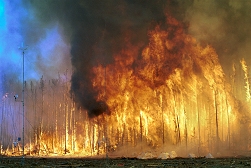
©Source
|
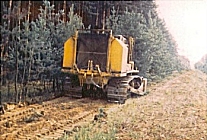
KMMCS in agricultural version mills the border of a forrest.
|
Krohn machines already had worked to cut fire break corridor at village Weisswasser, Germany near border to Poland.
There a 60 m wide fire break corridor was cut faster and easier than all other traditional activities could have done.
This prevented the forest fire to proceed above the soil and suppressed the proceed below surface.
|
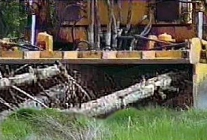
Several
trees are shreddered simultaneously
|
3. Soil Improvement
One other use of Krohn machines for agriculture is
soil improvement and
soil rehabilitation,
melioration of contaminated areas and
counteract
desertification.
For this land improvement, -also called urban land improvement, land amelioration,
melioration or soil remedation - it is necessary to add material to the milling process.
That substrate either will be placed on top of the ground before the milling starts.
Or in case of liquid substances it can be sprayed into the soil in the moment
that it is passing the Krohn machines milling head.
4. Soil Rehabilitation
Areas that had been used for landfill, as dumpsite or for disposal have not ideal conditions for beeing reused for agriculture or silviculture
purposes. A layer of the missed elements can be placed on top of soil and is milled into the ground loosening it additionally. Different to furrowing
by plogh the Krohn machines mix the full volume by the tiller. That intensity of mixture is not possible with plogh work.
|
This substrate, in case of sludge typically laied with 30-50 cm height on the soil, will be milled in. It can also be copropel,
slush, slurry, silt, or glaur or glacial till e.g. from subway tunnel construction like our
soil remediation at sewage farm in Berlin, Germany. All type will be warped.
This decontamination of polluted land results in fertile substrate with lower concentration of noxious substances
like heavy metals. They are adsorbed by the substrate and are not that much biogen usable by the plants. They had been processed from thin
layer with high concentration into thick layer with low concentration and adsorbed to the additional substrate.
|
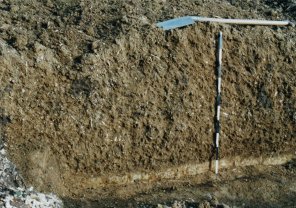
KMMCS can work down to 1m into soil to mill in material for soil improvement (Rinsefield by Berlin) White soil-line is border to untouched depth.
|
Through the improvement of the soil structure, nutrient utilization, soil life and microbial
activity are stimulated and the resupply of plant nutrients is promoted. Then immediate planting is possible, stimulation of the soil life
and better root penetration ensure healthier plants grow better as before. Strenghtened
plants create more biomass, more flowering occurs and the flowering time lasts
longer. Full chain of biological chain yield a result.
Krohn machines had done that milling for soil rehabilitation
next to Berlin, Germany, at 12 ha, accompanied by research of Technical University
Berlin. This area is a local recreation area now with educational stations.
5. First Areal Use
For "First Areal Use" Krohn machines can be
used by milling additives into soil. Soil improvement causes better fertilization
or establishes proper chemical balance. These type of soils can reach from sand
to muddy clay.
6. Counteract Desertification
One group of additiv substances improves the capacity
to store water, that leads to soil stabilization and erosion control for Desertification Reduction in deserted areas and usually
is used in sandy soil like in deserts. These substances are environmental
harmless as they are used in food industry and medicine
also. They can be made of pyrolysed organic waste from plants to pure carbon pore rich structure and/or
pore rich Lava-stone, which all have significant increased water-hold
effect. With their water conservation ability we can support
effective measure for regenerating the various functions
of a soil as well as counteracting further degradation. This contribute to the
resettlement of degraded surfaces and combats Desertification in desert or dry areas
and already had been used in several arabian areas.
Beside improve of water retention of the soil to prevent desiccation, shelter belts of fitting plants
protect land against wind erosion and counteract desertification.
7. Soil Improvement by adapted Terra Preta
One other group of additiv substances improves the nutrification of soil by milling individually adapted Terra Preta into
the basic soil. Terra Preta first was discovered in pre-Columbian jungle where the indians had developed a combination of several nutrient
substances that gives permanent fertility for growing plants.
8. Dust Reduction
One other group of additiv substances can avoid dust formation, which
is useful in areas that contain hazardous substances.
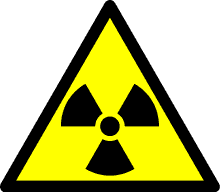
This can be
in combat areas where Depleted Uranium Ammunition (DU) (
238U) had been used. Left over
radioactive ammunition and the radioactive dust from burned rounds cover the
areas of fight. When KMMCS or agricultural Krohn machines mills in such a ground like in combat areas in Iraq, Kuwait, India or Bosnia
the dust can contain radioactive particles from the ammunition rounds made
of depleted uranium.

Such areas better shall be treated to down the
dust while process and also afterwards. This radioactive dust is breathable
and can pass the blood-barriers of lungh, brain, lymph and uterine and causes sever,
harmful consequences for the people and animals by multi cancer of different
types. It is known as
Deadly Dust
[
Report in german
(92 min), available also in english and with english subtitle, but report not in full length
part 1
(22 min), part 2
(15 min), part 3
(15 min)], the multi organ disease is known as Gulf
War Syndrom. Much higher illness-figures than usual before war show the necessity
to beware persons (newborn, child, adults) in Iraq to suffer from this
remain of radioactive particles from the war, lasting until today. Also
many allied forces soldiers suffer from the radioactive effects of use of their
ammunition.
Depleted Uranium particles from ammunition
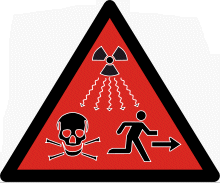 have the same radioactive effect
as the mostly feared Plutonium, well in everyones focus since the circumstances
in Nuclear Powerplant Fukushima, Japan. Same as Plutonium also Uranium, even
though depleted Uranium, is emitting
have the same radioactive effect
as the mostly feared Plutonium, well in everyones focus since the circumstances
in Nuclear Powerplant Fukushima, Japan. Same as Plutonium also Uranium, even
though depleted Uranium, is emitting  -particles.
These nanosized
-particles.
These nanosized
 -particles have short range of
few cm, but cause desastrous effects when they are incorporated, be it in lungh
or gastro-intestinal tract. These particles radiate the cells in their direct
surrounding. Adequat protection to personell and precautions to protect environment
from radioactive particle dust is inevitable.
-particles have short range of
few cm, but cause desastrous effects when they are incorporated, be it in lungh
or gastro-intestinal tract. These particles radiate the cells in their direct
surrounding. Adequat protection to personell and precautions to protect environment
from radioactive particle dust is inevitable.
9. Soil Compaction
One further group of substances can harden the
soil, even if it is exposed to heavy humidity. In such areas, that sometimes
are muddy, it might be wished to compact the soil to have road construction
with hardend paths and roads usable even in rainy time. The additives are substances
also beeing used in food industry, are environmental harmless and can be used
in cold and hot areas and have been proven on large scale already e.g. in Canada.
KMMCS - Maschinelle Minenräumung und Bodensanierung
(KMMCS - Mechanical Mine Clearance and Soil Rehabilitation)
Tobias Steidle
Am Ehrenhain 2
D-38678 Clausthal
Germany
Tel.: +49 (0) 5323 92 21 55
Fax: +49 (0) 5323 92 21 56
Mobil: +49 (0) 170 9988 170
E-Mail contact
Ideas and mistakes please report to
Webmaster
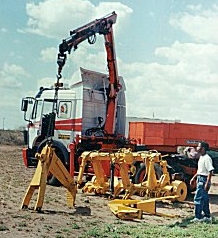
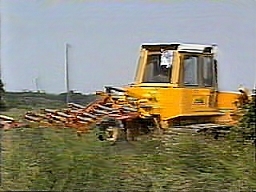
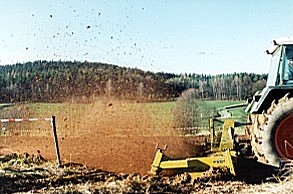









 This can be
in combat areas where Depleted Uranium Ammunition (DU) (238U) had been used. Left over
radioactive ammunition and the radioactive dust from burned rounds cover the
areas of fight. When KMMCS or agricultural Krohn machines mills in such a ground like in combat areas in Iraq, Kuwait, India or Bosnia
the dust can contain radioactive particles from the ammunition rounds made
of depleted uranium.
This can be
in combat areas where Depleted Uranium Ammunition (DU) (238U) had been used. Left over
radioactive ammunition and the radioactive dust from burned rounds cover the
areas of fight. When KMMCS or agricultural Krohn machines mills in such a ground like in combat areas in Iraq, Kuwait, India or Bosnia
the dust can contain radioactive particles from the ammunition rounds made
of depleted uranium.
 Such areas better shall be treated to down the
dust while process and also afterwards. This radioactive dust is breathable
and can pass the blood-barriers of lungh, brain, lymph and uterine and causes sever,
harmful consequences for the people and animals by multi cancer of different
types. It is known as
Such areas better shall be treated to down the
dust while process and also afterwards. This radioactive dust is breathable
and can pass the blood-barriers of lungh, brain, lymph and uterine and causes sever,
harmful consequences for the people and animals by multi cancer of different
types. It is known as
 have the same radioactive effect
as the mostly feared Plutonium, well in everyones focus since the circumstances
in Nuclear Powerplant Fukushima, Japan. Same as Plutonium also Uranium, even
though depleted Uranium, is emitting
have the same radioactive effect
as the mostly feared Plutonium, well in everyones focus since the circumstances
in Nuclear Powerplant Fukushima, Japan. Same as Plutonium also Uranium, even
though depleted Uranium, is emitting